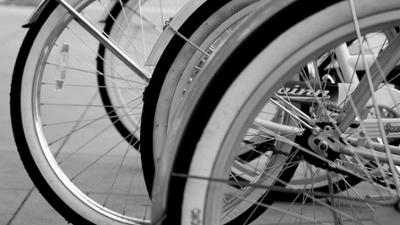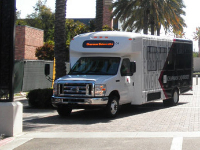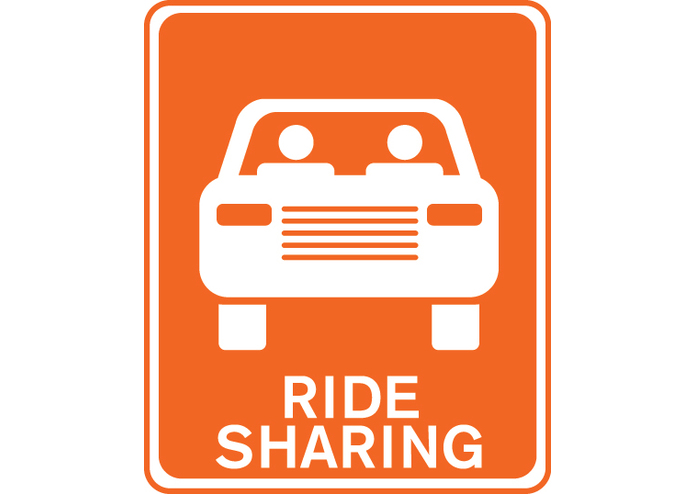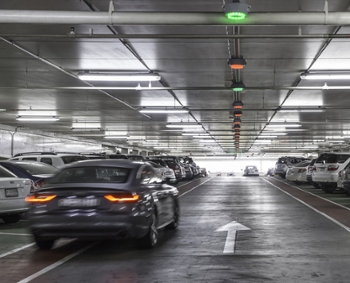- Campus Services
- Budget Office
- Campus Controller
- Campus Planning and Design
- Career and Professional Development
- Community Relations
- Event Operations
- Facilities Management
- Fire & Life Safety
- Institutional Compliance and Internal Audit
- Institutional Research and Decision Support
- Legal Affairs
- Mail Services
- Parking Services
- Public Safety
- Strategic Marketing and Communications
- Sustainability
- Copy Jobs
- Campus Resources
»Transportation
Targeting Chapman’s Alternative Transportation Improvements

Chapman University has a large number of students who commute to campus daily, however little is known about their commuting habits. In order to make successful recommendations about alternative transportation strategies that will be utilized by students, it is important to to understand where students commute from and what their transportation preferences are.
Biking at Chapman
 Biking, a form of active and sustainable transportation, makes up only a small portion
of commuters to Chapman, and should be better promoted to increase the university’s
sustainability efforts, as well as to reduce stress caused by parking. The main goal
of this study is to analyze the state of biking among all members of the Chapman community,
and to develop suggestions for improving the presence of biking among commuters to
campus.
Biking, a form of active and sustainable transportation, makes up only a small portion
of commuters to Chapman, and should be better promoted to increase the university’s
sustainability efforts, as well as to reduce stress caused by parking. The main goal
of this study is to analyze the state of biking among all members of the Chapman community,
and to develop suggestions for improving the presence of biking among commuters to
campus.
Active and Public Transportation
 Chapter 3 focuses on active and public transportation at Chapman University and how
these alternative forms of transportation compare to the primary form of transportation
to campus, personal vehicle commute. Active and public transportation have been viewed
as more environmentally friendly, but these transportation methods pose more benefits
to individuals compared to personal vehicle transport. The measures that this chapter
examined were carbon emissions, monetary costs and savings, and calories burned.
Chapter 3 focuses on active and public transportation at Chapman University and how
these alternative forms of transportation compare to the primary form of transportation
to campus, personal vehicle commute. Active and public transportation have been viewed
as more environmentally friendly, but these transportation methods pose more benefits
to individuals compared to personal vehicle transport. The measures that this chapter
examined were carbon emissions, monetary costs and savings, and calories burned.
Ridesharing
 Many people who drive to Chapman University every day arrive in single passenger vehicles.
However, ridesharing can reduce this number by reducing the amount of people who
commute in single passenger vehicles with the added bonus of reducing traffic congestion
in the city of Orange from people coming to campus.
Many people who drive to Chapman University every day arrive in single passenger vehicles.
However, ridesharing can reduce this number by reducing the amount of people who
commute in single passenger vehicles with the added bonus of reducing traffic congestion
in the city of Orange from people coming to campus.
Parking Demand Management
 Chapters 5-7 focus primarily on Chapman University’s parking situation, as well as
alternative options. Chapter 5 explores improving parking efficiency, for as the student
body continues to grow, parking will becoming increasingly difficult. Chapter 6 looks
at the costs associated with parking infrastructure as well as above- versus below-ground
parking structures, while Chapter 7 makes recommendations for programs encouraging
alternative transit options for the Chapman community.
Chapters 5-7 focus primarily on Chapman University’s parking situation, as well as
alternative options. Chapter 5 explores improving parking efficiency, for as the student
body continues to grow, parking will becoming increasingly difficult. Chapter 6 looks
at the costs associated with parking infrastructure as well as above- versus below-ground
parking structures, while Chapter 7 makes recommendations for programs encouraging
alternative transit options for the Chapman community.